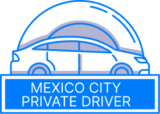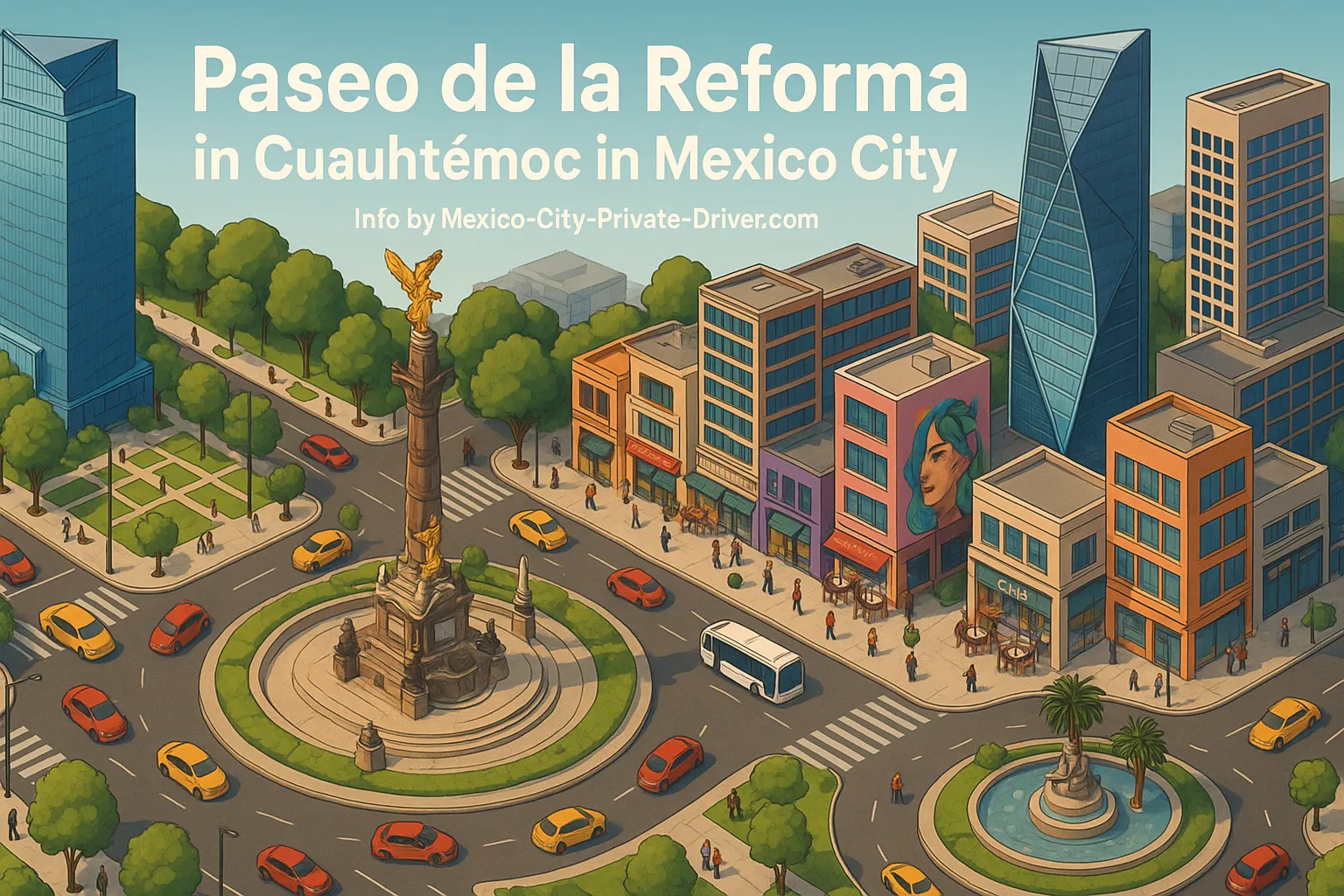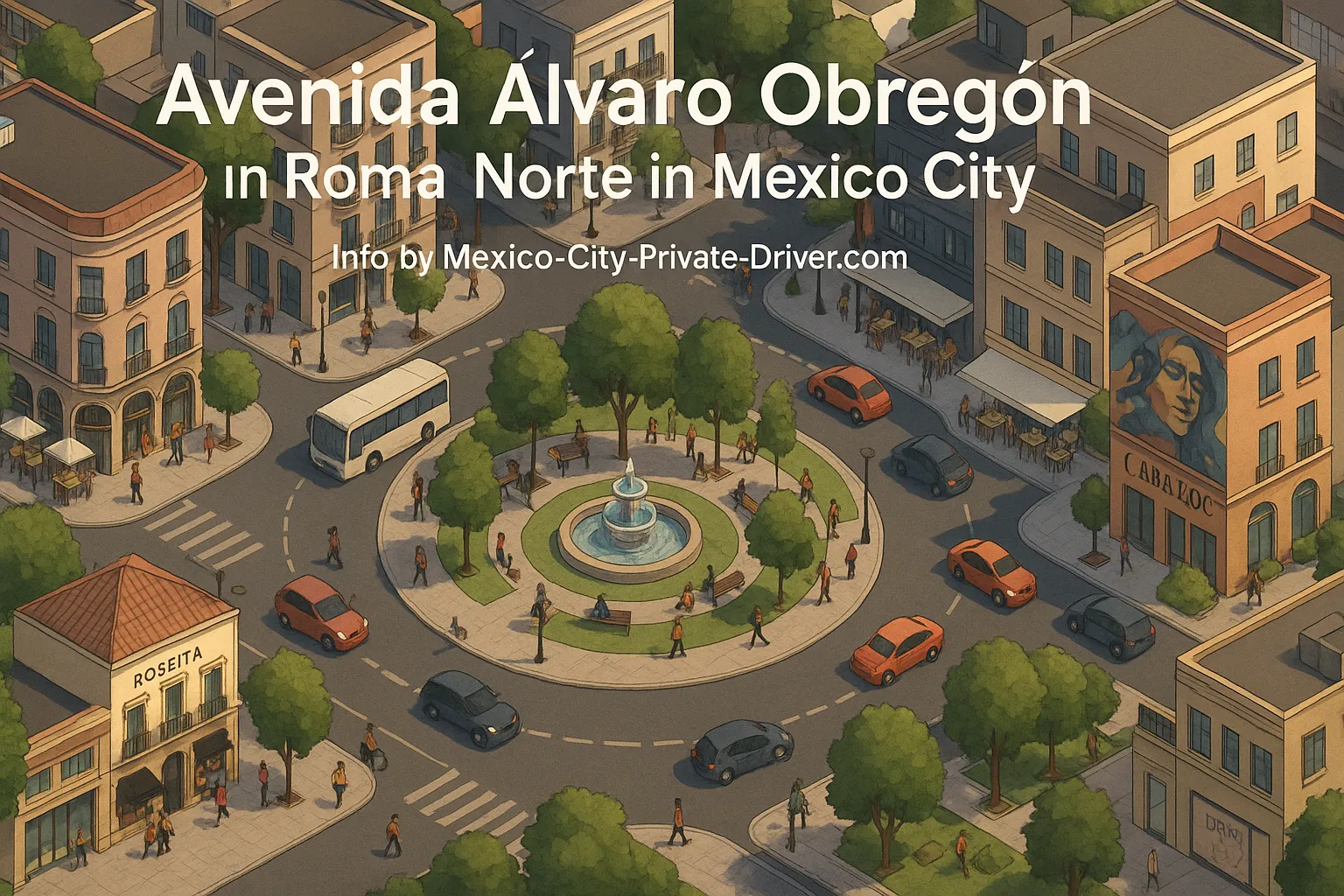Driving into Pantitlán: an introduction from Mexico-City-Private-Driver.com
My name is Juan, owner and lead driver at Mexico-City-Private-Driver.com. I’ve spent the last decade driving residents and visitors through every neighborhood in Mexico City — from quiet lanes in Polanco to the rush-hour arteries that feed the eastern edge of the city. One place people often ask me about is Zaragoza in Pantitlán (Calzada Ignacio Zaragoza). It’s a major gateway — not glamorous, but essential. If you’re planning a pickup, drop-off, airport transfer, or a custom tour that touches the east side of CDMX, this is where detailed, practical local knowledge matters.
What is Zaragoza in Pantitlán? The basics
When locals talk about “Zaragoza” near Pantitlán they usually mean Calzada Ignacio Zaragoza — the broad arterial that runs east–west from the city center out toward the Mexico–Puebla corridor. Pantitlán itself is one of Mexico City’s busiest transit hubs (Metro lines 1, 5, 9 and A converge there), and Zaragoza is the major urban roadway that threads through this sector.
In short:
- Avenida / Calzada Ignacio Zaragoza = major east–west arterial through eastern CDMX
- Pantitlán = huge metro and bus interchange, administrative boundary between Iztacalco and Venustiano Carranza
- Nearby neighborhoods = parts of Iztacalco, Venustiano Carranza; accessible from central neighborhoods like Roma, Condesa and downtown (Centro Histórico) with a 20–50 minute drive depending on traffic
The street layout and traffic reality
From a driver’s perspective, Zaragoza is a wide, often multi-lane avenue with medians, bus lanes, and heavy commercial traffic. It’s an arterial road — think of it as a spine: everything funnels into and out of Pantitlán from there.
Typical traffic patterns
- Peak morning (roughly 6:30–9:30): intense inbound and outbound commuter traffic — expect slow-moving periods and long queues at major cross-streets.
- Midday (10:30–15:00): variable — often better, but intersections near markets and transit hubs remain active.
- Evening rush (17:00–20:30): heavy, especially eastbound if people are heading out of the city or to bus terminals.
- Weekends: can be busy near markets and holiday weekends when people travel toward Puebla or the eastern suburbs.
As a private driver I watch the traffic cameras and listen to dispatch updates. You’ll notice, once you travel Zaragoza with a seasoned driver, how quickly a detour can shave off 10–20 minutes compared to sitting in the main lanes.
Road features to expect
- Multiple lanes with public-transport bus corridors and heavy microbus (pesero) activity
- Traffic lights with long cycles at major junctions near Pantitlán
- Pedestrian crossings near metro exits and markets — watch for people stepping into the street suddenly
- Occasional street vendors and pop-up stands (especially near transit exits) that narrow sidewalks and create local congestion
- Seasonal puddles and drainage issues — eastern CDMX can flood during heavy rains
Public transportation and connectivity
Pantitlán is one of Mexico City’s biggest interchange points. If you are traveling by metro, this is where lines 1 (pink), 5 (yellow), 9 (brown) and A (purple) intersect. There’s also a CETRAM (transportation center) with peseros, buses, and official taxi stands.
For visitors this means two things:
- Great connectivity — from Pantitlán you can reach many parts of the city via subway with only one transfer.
- High passenger volumes — at peak times the station and surrounding sidewalks are crowded — I always advise clients to keep belongings secure and travel by pre-arranged vehicle if you have luggage.
Metro tips I give my clients
- If your destination is the historic center or Condesa/Roma, a door-to-door private car is often faster and more comfortable than navigating multiple metro transfers with luggage.
- If you insist on metro for budget reasons, aim to travel outside peak windows and only use well-populated carriages — avoid Line A and Line 5 during crush hours if you have heavy luggage.
- Use Pantitlán as a transfer point only if you are comfortable with crowds; alternative transfer stations (like Pino Suárez) can be less chaotic depending on your direction.
Driving, parking, and local regulations
From the driver’s seat I always confirm: where will you be picked up? Hotels have easier loading zones than random street corners — I’ll usually ask for a hotel lobby, official taxi stand, or a secure curb cutout at CETRAM.
Parking and pickups
- Short picks/express drop-offs: I recommend we coordinate a 3–5 minute curbside window inside the CETRAM perimeter or at a nearby definable landmark (bank branch, supermarket entrance). That helps avoid fines or blockages.
- Longer waits: There are few safe long-term public parking options on Zaragoza itself. For longer pickups I will usually go to a nearby private parking lot or ask the client to meet at a hotel or shopping plaza with secure parking.
- Hotel pickups: If you’re staying in Roma, Condesa, Polanco or downtown, I’ll pick you up at your lobby — hotels have established pickup procedures that make everything smoother than meeting on Zaragoza.
Local regulation notes
- The city’s traffic enforcement and cameras are active: speeding and improper stopping can mean fines. I advise not to double-park on Calzada Ignacio Zaragoza.
- “Hoy No Circula” and air-quality driving restrictions apply — check your vehicle’s allowed days if you plan to drive late. For our fleet, we ensure compliance so we don’t get stuck in fines.
- Security checkpoints sometimes appear near transit hubs. I keep my vehicle documentation visible and updated for quick inspections.
Safety and practical visitor tips only a private driver would tell you
I live and breathe logistics, so here are the small things that make a big difference for visitors:
- Coordinate pickup times with metro schedules. Pantitlán’s metro crush can add 10–30 minutes to a transfer if you factor in navigating through station crowds and finding an exit. I prefer meeting clients on the street outside their metro exit with a clear WhatsApp photo of the meeting point.
- Have cash for tiny vendors. If you want to try an esquite (corn cup) or a quick snack near the station, small bills help. But I’ll recommend trusted vendors — there are many, and not all are safe.
- Bring a lighter bag for metro travel. If you must use the metro to/from Zaragoza, keep passports and valuables on your person; I store luggage in the trunk and accompany clients to the platform to ensure smooth boarding.
- Avoid walking long distances at night — I’ll always arrange door-to-door service late in the evening rather than leaving you to cross unfamiliar streets around Pantitlán.
- Expect market detours. On market days some smaller streets feeding the avenue become pedestrian zones or clogged with stalls. That’s when I take the long but faster alternative via Circuito Interior or Río Churubusco.
Why choose a private driver around Zaragoza and Pantitlán? Benefits for visitors
From my vantage driving for tourists and business visitors, hiring a private driver for pickups around Zaragoza and Pantitlán gives you advantages that go beyond comfort:
- Time savings — I know the micro-detours and the best curbside slots for fast pickups near the CETRAM and metro exits.
- Security and luggage handling — I meet clients at safe, visible spots and handle bags, tickets, and quick check-in assistance.
- Door-to-door routing — a hotel lobby pickup is nearly always faster than battling the Pantitlán crowds, especially in rainy season or peak commute times.
- Local navigation that keeps you comfortable — I’ll reroute on the fly if there’s construction, a protest, or flooding on Zaragoza.
Custom routes and day-trip suggestions that include Zaragoza in Pantitlán
Depending on your interests, Zaragoza is a practical piece of a larger route. Here are a few itineraries I often drive for clients, with notes on timing and what to expect.
1) Airport transfers: Benito Juárez International (AICM) ↔ Centro, Roma, Condesa
- Route: If traffic is light, Avenida Zaragoza provides a direct easterly route that connects with Circuito Interior or Boulevard Puerto Aéreo. From the airport, I often use Zaragoza to enter the city center when the northbound routes are congested.
- Timing: Allow 25–40 minutes from the airport to Roma/Condesa off-peak; 45–70 in peak traffic.
- Insider tip: I meet clients inside the terminal exit when possible and complete luggage transfer within the official pickup window to avoid fines in front of terminals.
2) Day trip to Puebla (or the Puebla road)
- Route: Zaragoza is the natural eastbound approach before merging onto the México–Puebla highway (Highway 150/150D). It’s used frequently by travelers leaving the city toward Puebla and Cholula.
- Timing: The first stretch through Zaragoza can be heavy; leaving early in the morning (before 6:30) often saves an hour.
- Insider tip: If you’re visiting Puebla for a day, I recommend starting on Zaragoza but exiting quickly onto toll roads for a smoother highway experience.
3) Cultural loop: Condesa → Roma → Centro → Zaragoza → Basilica de Guadalupe
- Route: Condesa’s Avenida Ámsterdam and surrounding streets to Roma, then Camino/Chapultepec down to the Centro Histórico, and then east along Zaragoza toward La Villa (Basilica).
- Why I love this: You get an elegant morning walk in Condesa/Avenida Ámsterdam for photos, coffee in Roma, a historical stroll in Centro, and then a solemn visit to the Basilica — all without switching cars.
- Timing and caution: Expect slow sections near Basilica on pilgrimage days (first week of December, Feb 2, etc.) I’ll plan these to avoid heavy pedestrian surges.
Nearby hotels and pickup references I commonly use
Clients often ask which hotels are easiest for pickups when they want to visit Zaragoza or be collected near Pantitlán. Here are types of places I recommend:
- Condesa/Roma hotels (boutique): easiest for staged pickups on Avenida Ámsterdam and tree-lined streets. I can stage the car in the loading zone so you don’t have to lug luggage through the neighborhood.
- Centro Histórico hotels: many have small but efficient loading zones. I can coordinate curbside pickups and perform quick luggage drop-offs at the Basilica or markets afterward.
- Airport-connector hotels or budget hotels near Pantitlán: if you need a first-night stay after a flight, I usually recommend a hotel with private parking or a 24-hour lobby to avoid street-side pickup problems.
Local flavor: markets, street food and quick stops I take my clients to
Pantitlán and the stretch along Zaragoza are not classic tourist promenades, but they are authentic Mexico City: busy markets, neighborhood fondas, and moments of warmth. A few stops I make on request:
- Small tianguis (street markets) where you can find fresh fruit, quesadillas and local candies — perfect for a quick snack stop if you’re curious about street food culture.
- Family-run fondas where the mole, caldo de res or a late-night tacos al pastor can be surprisingly good. I’ll recommend only the clean, trusted places where I’ve eaten myself.
- Street vendors selling esquites and tamales outside Pantitlán metro — I often stop for clients who want an authentic, quick bite, but always at a vendor I trust.
A real “wow” story from Zaragoza in Pantitlán — an unexpected human moment
I’ll tell you a story that still moves me and explains why I love this job.
A few years ago, I was driving a family of three — mother, teenage daughter, and grandfather — who were staying in Roma. They wanted to visit the Basilica de Guadalupe and then continue on to Puebla to see relatives. We took the usual route out along Zaragoza and pulled close to the Basilica. As we stopped to pick up a quick coffee, a woman approached my car window visibly upset — she had a picture of a small boy and said she’d lost him at Pantitlán hours earlier.
The family’s grandfather, who had a quiet, steady way about him, recognized the boy from a picture he’d seen earlier that week on a community bulletin. Within minutes the group — a private driver, a worried stranger, and a visiting family — were coordinating via WhatsApp, calling local market stalls, station custodians, and one of my radio contacts at the CETRAM. We spent the next two hours driving through the adjacent markets and transit exits. It was tense; the stopwatch kept ticking.
Near an overpass where Zaragoza narrows, we found the boy sitting on a bench with an elderly vendor who’d sheltered him. It turned out he had wandered off chasing a street performer. The reunion was immediate and warm: hugs, tears, and the vendor refusing to take any money. The family invited the woman and the vendor for coffee; I drove everyone to the Basilica so they could give thanks together.
It’s a small story, but that day — amidst the crowded chaos of Zaragoza and Pantitlán — a loose neighborhood network of drivers, vendors, and strangers came together and solved a problem faster than any official channel. That’s the human side of driving here: you’re not just a vehicle operator, you’re a fixer, a negotiator, and sometimes, a lifeline. I still tell that story to remind clients that this city, even in its busiest junctions, is full of unexpected kindness.
Seasonal considerations: rains, festivals and holidays
Two seasonal factors change how I plan around Zaragoza and Pantitlán:
- Rainy season (roughly June–October): Eastern parts of the city are prone to puddling and localized flooding. Zaragoza can bottleneck if water accumulates. I advise contingency time and may route via higher-elevation roads like Circuito Interior.
- Religious and civic holidays (Dec 12 for the Virgin, Cinco de Mayo festivities in Puebla but affecting travel lanes): the Basilica and routes along Zaragoza see pilgrim traffic. If your travel aligns with these dates, plan extra time or consider alternate routes.
What I charge and how I manage pickups around Zaragoza
As a private driver service we price transparently and build in time buffers for Pantitlán pickups. Here’s generally how I manage bookings for this corridor:
- Airport or hotel-to-Basilica transfers: fixed price with a guaranteed on-time pickup and a 15-minute grace period for arrivals.
- Transfers that include a stop at Pantitlán (metro transfers, market visits): hourly or fixed fares depending on the number of stops and luggage handling. We include waiting time and the option to switch vehicles if necessary for large groups.
- Day trips to Puebla via Zaragoza: priced per vehicle, with tolls and parking included; we recommend starting early to avoid Zaragoza rush-hour congestion.
Always ask for a clear meeting point and a WhatsApp contact. I’ll send a photo of the vehicle and a pin drop of the exact curb where I’ll wait.
Insider navigation tricks I use daily
Here are a few practical navigation moves only a local driver would think to
Martin Weidemann is a digital transformation expert and entrepreneur with over 20 years of experience leading fintech and innovation projects. As a LinkedIn Top Voice in Digital Transformation and contributor to outlets like Forbes, he now brings that same expertise to travel and mobility in Mexico City through Mexico-City-Private-Driver.com. His focus: trustworthy service, local insights, and peace of mind for travelers.


